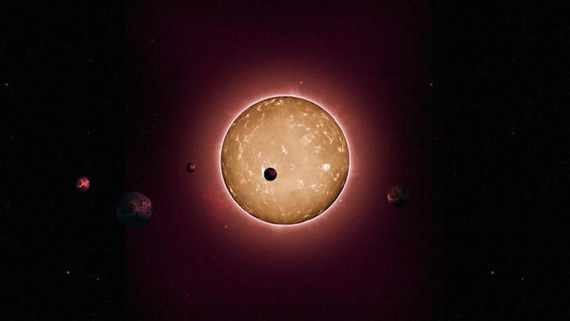
Scientists led by the University of Birmigham asteroseismologists recently discovered a new solar system that has five Earth-sized planets orbiting around an ancient star, suggesting life existed long before than it was previously believed.
In The Astrophysical Journal, the team of scientists revealed on Tuesday that it was only because of NASA's Kepler mission that the discovery of an orange Sun-like star (Kepler-444) that hosts five planets like our own was possible.
The size of the planets ranged between Mercury and Venus.
"We've never seen anything like this—it is such an old star and the large number of small planets make it very special," Daniel Huber, an astronomer from the University of Sydney and a co-author of an Astrophysical Journal paper about the finding published this week, said in a statement.
Huber is one of the researchers who discovered what they now address as the oldest planetary system ever found. Kepler-444 was formed around 11.2 years ago. The planetary system consists of the five rocky planets orbiting a star which is around two and a half times as old as our own Sun.
"Now that we know that these planets can be twice as old as Earth, this opens the possibility for the existence of ancient life in the galaxy," Tiago Campante, the lead author and an astronomer from the University of Birmingham, told New Scientist.
The research was carried out using "asteroseismology — listening to the natural resonances of the host star caused by sound trapped within it."
The oscillations cause small changes or pulses in the brightness of the star, allowing the scientists to measure its diameter, mass and age.
"There are far-reaching implications of this discovery. We now know that Earth-sized planets have formed throughout most of the universe's 13.8 billion-year history which could provide scope for the existence of ancient life in the galaxy. By the time the Earth formed, the planets in this system were already older than our planet is today. This discovery may now help to pinpoint the beginning of what we might call the era of planet formation," The Times of India quoted Campante as saying.
The video below shows the positioning of the star as well its planets:















